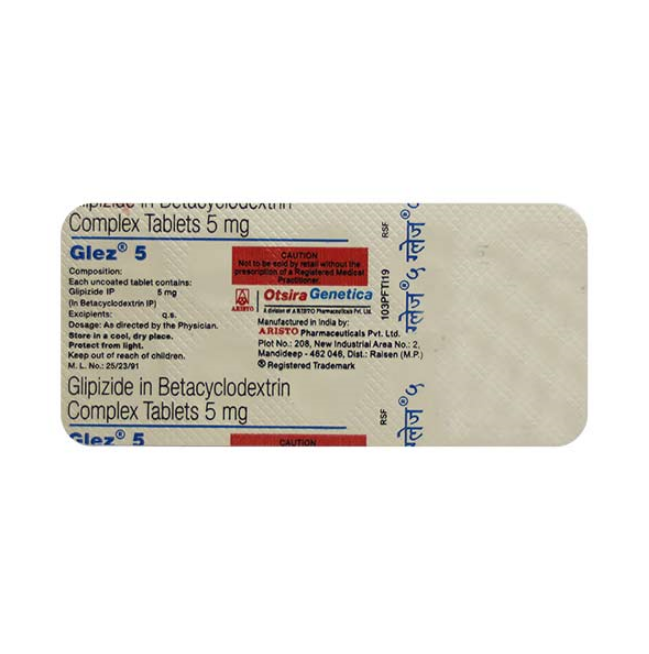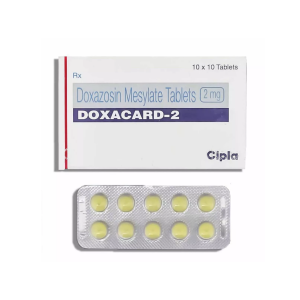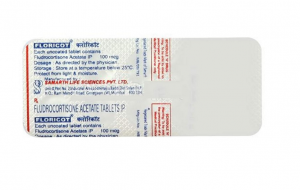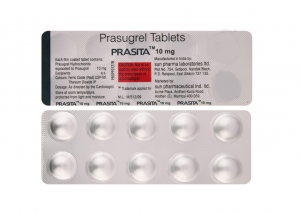Description
Glez 5 mg is a blood-glucose-lowering drug of the sulfonylurea class. It contains the active ingredient Glipizide, which lowers blood sugar by causing the release of your body’s natural insulin. It is combined with diet and exercise to improve glycaemic control in adults with type 2 diabetes. It may also be used with other diabetes medications. Having adequate blood glycaemic control helps prevent kidney damage, nerve problems, blindness, loss of limbs, and sexual function problems. Proper diabetes management may also reduce your risk of heart attack or stroke.
Product Description
Glez 5 mg is contraindicated in the following conditions:
— Hypersensitivity to Glipizide, other sulfonamides or sulfonylureas, or any of the excipients of this drug.
— Severe hepatic or renal insufficiency
— Insulin-dependent diabetes, diabetic coma, and diabetic ketoacidosis
— Patients treated with miconazole
— Pregnancy and lactation.
Since the active ingredient of the medicine Glipizide belongs to the class of sulfonylurea agents, caution should be taken in patients with G6PD deficiency. Treating patients with G6PD deficiency with sulfonylurea agents can cause hemolytic anaemia; therefore, a non-sulfonylurea should be considered.
All sulfonylurea agents, including Glez 5 mg, can produce severe hypoglycemia. Kidney or hepatic impairment may cause increased levels of Glipizide, which may increase the risk of a hypoglycaemic reaction. Elderly or malnourished patients and those with adrenal or pituitary insufficiency should exercise caution while taking medicine.
Side Effects
The common side effects of Glez 5 mg are nausea, vomiting, diarrhoea, loss of appetite, upset stomach, constipation, headache, and weight gain may occur. If any of these side effects get worse, tell your doctor straight away. Tell your doctor immediately if these side effects last or worsen. Many people using this antidiabetic medicine do not have serious side effects. Inform your doctor immediately if you have any serious side effects, including signs of infection, stomach pain, easy bruising, easy bleeding, unusual tiredness, dark urine, sudden weight gain, mood changes, swelling of hands/feet, and seizures.
Glipizide may also cause a significant drop in blood sugar. The condition is often referred to as hypoglycaemia. You may be more likely to develop the condition if you do not consume enough calories from food or if you do perform unusually exercise. Symptoms of low blood sugar include fast heartbeat, sudden sweating, shaking, blurred vision, dizziness, fast heartbeat, extreme hunger, or tingling hands/feet. It is always best to carry a glucose tablet to treat low blood sugar.
Please talk to your doctor if you are concerned about side effects.
How to Use
Take Glez orally thirty minutes before breakfast or the day’s first meal. Some patients, those who are taking higher doses of the medication, may be directed to take this medicine twice daily. The antidiabetic dosage is based on your medical condition and response to treatment. To reduce the risk of side effects, your doctor may advise you to begin treatment with the lowest dose and gradually increase your dose. Follow your doctor’s instructions carefully.
If you are already taking an antidiabetic agent such as chloropropamide, follow your doctor’s advice carefully when using an all-new diabetes medicine called Glipizide.






1 review for Glez 5mg Tablet
There are no reviews yet.